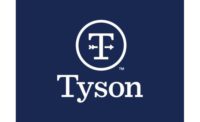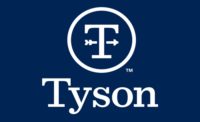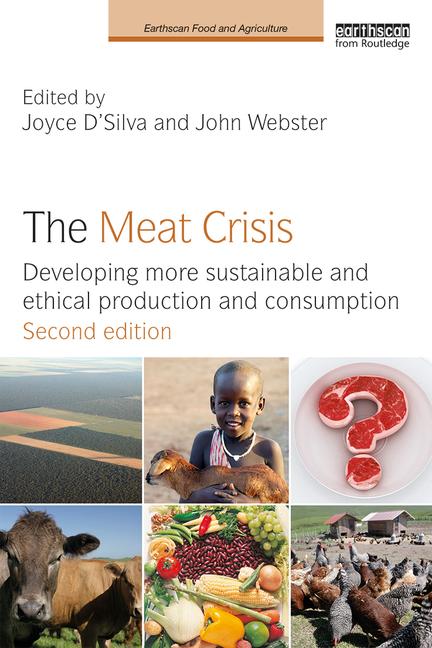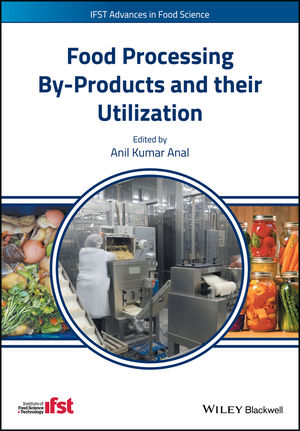Tyson Foods, Inc. reported its results for the third quarter. Sales for the third quarter topped $10 billion, up from $9.8 billion in 2017. Net income rose to $542 million, and adjusted operating income rose to $816 million. Tyson’s Beef segment posted a record operating income of $318 million. For the first nine months of the fiscal year, Tyson’s sales stand at $30.053 billion.
“We continued to grow our business in Q3, even with the headwinds we faced related to oversupply and pricing,” said Tom Hayes, Tyson Foods president and chief executive officer. “In this challenging environment, we delivered a solid quarter overall, growing earnings, operating income and margins.
“Our diverse portfolio continues to be a key advantage for us. Our Beef and Prepared Foods segments had a strong quarter, helping to balance the results in our Chicken and Pork segments, which faced stiff headwinds.
“We have a sound strategy and a solid foundation, which will continue to serve our business and shareholders well. We remain confident in our ability to create long-term value,” Hayes added.
Summary of Segment Results
- Beef - Sales volume increased for the nine months and third quarter of fiscal 2018 due to improved availability of cattle supply, stronger demand for our beef products and increased exports. Average sales price decreased for the third quarter of fiscal 2018 due to increased availability of live cattle supply and lower livestock costs. Average sales price increased for the nine months of fiscal 2018 as demand for Tyson’s beef products and strong exports outpaced the increase in live cattle supplies in the first six months of fiscal 2018, partially offset by lower livestock cost in the third quarter of fiscal 2018. Operating income for the nine months and third quarter of fiscal 2018 increased as the company continued to maximize revenues relative to live fed cattle costs, partially offset by increased labor and freight costs and one-time cash bonus to frontline employees of $27 million incurred in the second quarter of fiscal 2018.
- Pork - Sales volume decreased for the nine months and third quarter of fiscal 2018 as a result of balancing supply with customer demand during a period of margin compression. In the third quarter of fiscal 2018, average sales price decreased associated with lower livestock costs. For the nine months of fiscal 2018, average sales price was down slightly due to price decreases in the second and third quarters of fiscal 2018 associated with lower livestock costs. Operating income for the nine months and third quarter of fiscal 2018 decreased from the prior year record results, due to compressed pork margins caused by excess domestic availability of pork, higher labor and freight costs, and one-time cash bonus to frontline employees of $12 million incurred in the second quarter of fiscal 2018.
- Chicken - Sales volume was up for the nine months of fiscal 2018 primarily from incremental volume from business acquisitions. Sales volume decreased slightly for the third quarter of fiscal 2018 due to sluggish demand for certain chicken products, partially offset by incremental volume from business acquisitions. Average sales price increased for the nine months and third quarter of fiscal 2018 due to sales mix changes and price increases associated with cost inflation. Operating income decreased for the nine months and third quarter of fiscal 2018 due to increased labor, freight and growout expenses, in addition to $89 million of higher feed ingredient costs and derivative losses in the third quarter of fiscal 2018, and $51 million of one-time cash bonus to frontline employees incurred in the second quarter of fiscal 2018. These decreases were partially offset for the nine months and third quarter of fiscal 2018 by Financial Fitness Program cost savings of $62 million and $25 million, respectively.
- Prepared Foods - Sales volume increased for the nine months and third quarter of fiscal 2018 primarily from incremental volume from business acquisitions. Average sales price increased for the nine months and third quarter from higher input costs of $80 million for the nine months of fiscal 2018 and product mix which was positively impacted by business acquisitions. Operating income increased for the nine months and third quarter of fiscal 2018 due to $101 million and $39 million, respectively, of Financial Fitness Program cost savings, in addition to positive impacts from improved mix and incremental business acquisition results, partially offset by higher input and freight costs and one-time cash bonus to frontline employees of $19 million incurred in the second quarter of fiscal 2018. Additionally, operating income was impacted in the nine months of fiscal 2018 by a $79 million impairment, net of realized gain, related to the divestiture of non-protein businesses, and was impacted in the nine months of 2017 from $21 million of AdvancePierre purchase accounting and acquisition related costs and a $52 million impairment of our San Diego Prepared Foods operation.
Outlook
“For fiscal 2019, USDA indicates domestic protein production (beef, pork, chicken and turkey) should increase approximately 2-3% from fiscal 2018 levels,” the company stated in its release. “As previously announced, in the fourth quarter of fiscal 2017, our Board of Directors approved a multi-year restructuring program (the “Financial Fitness Program”), that is expected to contribute to the Company’s overall strategy of financial fitness through increased operational effectiveness and overhead reduction. Through a combination of synergies from the integration of AdvancePierre and additional elimination of non-value added costs, the program is estimated to result in net savings in excess of $200 million in fiscal 2018, $400 million in fiscal 2019 including new savings of $200 million, and $600 million in fiscal 2020 including additional savings of $200 million. The majority of these savings, which are focused on supply chain, procurement, and overhead improvements, are expected to be realized in the Prepared Foods and Chicken segments. The following is a summary of the outlook for each of our segments, as well as an outlook for sales, capital expenditures, net interest expense, liquidity and tax rate for the remainder of fiscal 2018 and fiscal 2019.
“Adjusted operating margin guidance is provided below on a non-GAAP basis. The Company is not able to reconcile its full-year fiscal 2018 adjusted operating margin guidance to its full-year fiscal 2018 projected GAAP operating margin guidance because certain information necessary to calculate such measure on a GAAP basis is unavailable or dependent on the timing of future events outside of our control. Therefore, because of the uncertainty and variability of the nature of the amount of future adjustments, which could be significant, the Company is unable to provide a reconciliation of this measure without unreasonable effort. Adjusted operating margin should not be considered a substitute for operating margin or any other measure of financial performance reported in accordance with GAAP. Investors should rely primarily on the Company’s GAAP results and use non-GAAP financial measures only supplementally in making investment decisions.
- Sale of Non-Protein Businesses – On April 24, 2017, we announced our intent to sell three non-protein businesses, Sara Lee Frozen Bakery, Kettle and Van’s. Additionally, in the first quarter of fiscal 2018, we made the decision to sell our pizza crust business. All of these non-protein businesses are part of our Prepared Foods segment and are being sold as part of our strategic focus on protein brands. We completed the sale of our Kettle business in the first quarter of fiscal 2018 and used the proceeds of $125 million to pay down debt. On July 30, 2018, subsequent to the completion of our third quarter of fiscal 2018, we completed the sale of our Sara Lee Frozen Bakery and Van’s businesses for $615 million. We expect to close on the sale of our pizza crust business in the fourth quarter of fiscal 2018.
- Sales – We expect fiscal 2018 sales to grow approximately 6% to between $40-$41 billion which is attributed to incremental AdvancePierre sales of $1.1 billion, an increase in sales volume in our legacy businesses and an improvement in mix. For fiscal 2019, we expect sales to grow to $42 billion due to volume growth, mix and approximately $150 million from the impact of the Tecumseh Poultry, LLC and American Proteins, Inc. acquisitions net of divestitures noted above. The majority of the sales growth is expected to occur in our Chicken and Beef segments, as well as expected growth in our Prepared Foods segment after excluding the impact of the divestitures.
- Beef – We expect industry fed cattle supplies to increase approximately 2% in fiscal 2019 as compared to fiscal 2018. We expect ample supplies in regions where we operate our plants. For fiscal 2018, we expect our Beef segment's adjusted operating margin to be above 6% with similar results in fiscal 2019.
- Pork – We expect industry hog supplies to increase approximately 3% in fiscal 2019 as compared to fiscal 2018. For fiscal 2018, we expect our Pork segment's adjusted operating margin to be around 6% with similar results in fiscal 2019.
- Chicken – AdvancePierre contributed $217 million of incremental revenue in the first nine months of fiscal 2018, or incremental $318 million in the first full year as part of our operation. We expect to capture Financial Fitness Program net savings of approximately $80 million in fiscal 2018, which is a combination of AdvancePierre net synergies and reduction of non-value added costs. Based on current futures prices, we expect an increase of approximately $80 million in feed ingredients in fiscal 2018 compared to fiscal 2017. USDA projects an increase in chicken production of approximately 2% in fiscal 2019 as compared to fiscal 2018. For fiscal 2018, we expect our Chicken segment's adjusted operating margins to be around 8%, with similar results for fiscal 2019.
- Prepared Foods – AdvancePierre contributed $872 million of incremental revenue in the first nine months of fiscal 2018, or incremental $1.3 billion in the first full year as part of our operation. We expect to capture Financial Fitness Program net savings of approximately of $140 million in fiscal 2018, which is a combination of AdvancePierre net synergies and reduction of non-value added costs. We currently expect raw material costs to be flat in fiscal 2018 as compared to fiscal 2017. For fiscal 2018, we expect our Prepared Foods segment's adjusted operating margin to exceed 11%, with similar results in fiscal 2019.
- Other – Other includes our foreign operations related to raising and processing live chickens in China, third-party merger and integration costs and corporate overhead related to Tyson New Ventures, LLC. We expect Other operating loss should be approximately $60 million in fiscal 2018.”
Source: Tyson Foods Inc.







